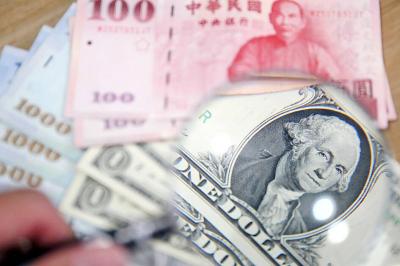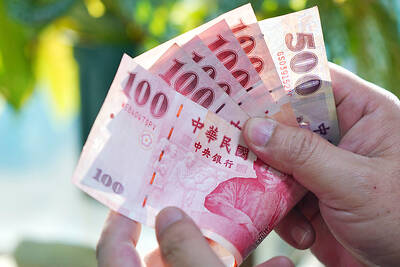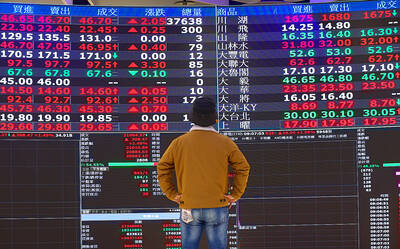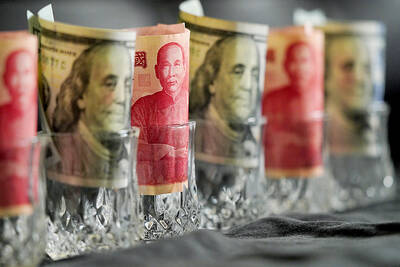Global shipments of gaming monitors could exceed 11 million units this year, surging 31 percent on an annual basis as PC makers expand product lineups to stimulate demand, market researcher TrendForce Corp (集邦科技) said in a report on Thursday.
The gaming monitor industry has so far shown strong growth, with shipments rising 57 percent year-on-year to 8.5 million units last year from 5.4 million a year earlier, the report said.
It attributed the increase to continuous diversification of panel types and monitor models.
The number of suppliers of gaming monitor panels rose as new entrants entered the supply chain, TrendForce senior research manager Anita Wang (王靖怡) said in the report.
China’s Star Optoelectronics Technology Co (華星光電) and Electronics Panda Crystal Technology Corp (中電熊貓) launched mass production last year, joining the ranks of main suppliers such as AU Optronics Corp (AUO, 友達光電) and Innolux Corp (群創) in Taiwan, Samsung Display Co and LG Display Co in South Korea, and BOE Technology Group Co (京東方) in China, Wang said.
Retail prices for gaming LCD panels fell to more consumer-friendly levels, which dialed up product adoption rates, she said.
The rise of fast-response in-plane switching (IPS) panels enabled wider adoption of IPS panels in gaming monitors last year, the report said, adding that a 10 percent increase in the technology penetration rate of IPS panels is expected this year, which would raise the rate to between 15 and 20 percent.
There was a significant increase in market share for vertical alignment (VA) panels last year, thanks to the growth in popularity of curved gaming monitors, the report said.
VA panels rose to prominence in 2018 because of an excellent cost-performance ratio, the report said, adding that last year, brands including AOC/Philips, Samsung Electronics Co and Micro-Star International Co (MSI, 微星科技) expended a lot of effort to expand the gaming hardware market with curved monitors.
As a result, curved gaming monitors claimed about 60 percent of the overall gaming monitor market last year, it said.
MSI is expected to continue expanding and diversifying its medium and large product lines to maintain high growth momentum, TrendForce said.
Along with Samsung, MSI is to release updated curved gaming monitors at the Consumer Electronics Show in Las Vegas, Nevada, next week, TrendForce said.
Monitor and PC makers are mulling expansion into the high-end gaming monitor segment, the researcher said.
Dell Inc has rolled out a gaming product equipped with an ultra-high-definition OLED panel, while Asustek Computer Inc (華碩) and Acer Inc (宏碁) are planning to introduce mini-LED display monitors, which are more affordable and deliver picture quality almost equal to OLED, TrendForce said.
HP, Asustek and Acer are also planning to roll out large gaming products, it said.

The US dollar was trading at NT$29.7 at 10am today on the Taipei Foreign Exchange, as the New Taiwan dollar gained NT$1.364 from the previous close last week. The NT dollar continued to rise today, after surging 3.07 percent on Friday. After opening at NT$30.91, the NT dollar gained more than NT$1 in just 15 minutes, briefly passing the NT$30 mark. Before the US Department of the Treasury's semi-annual currency report came out, expectations that the NT dollar would keep rising were already building. The NT dollar on Friday closed at NT$31.064, up by NT$0.953 — a 3.07 percent single-day gain. Today,

‘SHORT TERM’: The local currency would likely remain strong in the near term, driven by anticipated US trade pressure, capital inflows and expectations of a US Fed rate cut The US dollar is expected to fall below NT$30 in the near term, as traders anticipate increased pressure from Washington for Taiwan to allow the New Taiwan dollar to appreciate, Cathay United Bank (國泰世華銀行) chief economist Lin Chi-chao (林啟超) said. Following a sharp drop in the greenback against the NT dollar on Friday, Lin told the Central News Agency that the local currency is likely to remain strong in the short term, driven in part by market psychology surrounding anticipated US policy pressure. On Friday, the US dollar fell NT$0.953, or 3.07 percent, closing at NT$31.064 — its lowest level since Jan.

The New Taiwan dollar and Taiwanese stocks surged on signs that trade tensions between the world’s top two economies might start easing and as US tech earnings boosted the outlook of the nation’s semiconductor exports. The NT dollar strengthened as much as 3.8 percent versus the US dollar to 30.815, the biggest intraday gain since January 2011, closing at NT$31.064. The benchmark TAIEX jumped 2.73 percent to outperform the region’s equity gauges. Outlook for global trade improved after China said it is assessing possible trade talks with the US, providing a boost for the nation’s currency and shares. As the NT dollar

PRESSURE EXPECTED: The appreciation of the NT dollar reflected expectations that Washington would press Taiwan to boost its currency against the US dollar, dealers said Taiwan’s export-oriented semiconductor and auto part manufacturers are expecting their margins to be affected by large foreign exchange losses as the New Taiwan dollar continued to appreciate sharply against the US dollar yesterday. Among major semiconductor manufacturers, ASE Technology Holding Co (日月光), the world’s largest integrated circuit (IC) packaging and testing services provider, said that whenever the NT dollar rises NT$1 against the greenback, its gross margin is cut by about 1.5 percent. The NT dollar traded as strong as NT$29.59 per US dollar before trimming gains to close NT$0.919, or 2.96 percent, higher at NT$30.145 yesterday in Taipei trading